Catching up from last October, 2017:
After my
Bolivia scout, I flew from Santa Cruz de la Sierra to Porto Velho, the capital
of the Brazilian state of Rondônia. If there had been a direct flight between
the two major cities, it would have been only about 620 miles, but the grand
total of my flights via São Paulo and an overnight layover in Manaus ended up
being about 5.3 times farther than that. Such is travel within South America.
I had six
days here with my friend Joe Thompson. This was something of a cross between a
scouting trip for me and a private tour for him. Joe and I met through our
mutual friend Molly in Tucson 14 years earlier, and while both us wanted just a
few birds from this region, we were also both interested in learning about the
dragonflies and butterflies as well.
Our route
took us across the new bridge from Porto Velho to the west side of the Rio Madeira
(well, it’s new since I was here last, in 2006). From there we entered the
state of Amazonas and took the paved highway north to Humaitá, where a rather
nice and new hotel was our home for the next five nights.
Our first
stop was on the way to our hotel, and though it was late morning, it was good for
insects, if not the best for birds.
One
highlight was this dragonlet, Erythrodiplax
castanea.
We did come
across one of our bird targets, Predicted Antwren, discovered and described to
science only a few years ago. It got that name from Bret Whitney, who predicted
that a unique species of Herpsilochmus
antwren occurred on the west side of the Rio Madeira long before any
ornithologists had a chance to explore the area. He was right. Its song is more
distinctive than its appearance, as it looks very much like all the other gray,
black, and white antwrens in this genus.
Joe’s nearly
as interested in the plants as I am, especially if they have fancy flowers like
this Aristolochia didyma.
This Bluish-fronted
Jacamar was also at our first birding stop.
Another nice
dragonfly from here was this king skimmer, Orthemis
cultriformis.
A plant I finally
recognized only recently from my time at Cristalino was this small tree, Vismia cayennensis, one of the minority
of plants in Clusiaceae that isn’t a Clusia.
Getting a
bit ahead of myself, I’ll divulge that we did have a chance to stop here early in
the morning of our last day, because we missed our most wanted bird this first
day. It is known from here and few other sites: The “Campina” subspecies of
Azure-naped Jay, also discovered only recently. Some have advocated splitting
it as its own species.
We had an
amazingly cooperative Fasciated Antshrike low in a small tree, perhaps near its
nest.
And two rare
seedeaters popped up for us: Dark-throated Seedeater…
…and Copper
Seedeater (possibly a first state record).
Over the
next four days we visited mostly terra
firme forest on the west side of the Rio Madeira by simply taking side
roads and tracks off of the main highways west of Humaitá. Thanks to the
scouting and eBirding efforts of Brad Davis and Rennó Bruno, who know more
about Brazilian birds than almost anyone I know, we had some ideas of where to
stop. We didn’t go much farther west than the Ipixuna River, where we had a
good time exploring.
He we found what seems to be the first (and very disjunct)
state record of Manu Antbird. (I checked only eBird, Xeno-canto, and Wikiaves,
so there might be an older published record in the literature.) My recording
can be heard here:
We also
crossed the Madeira River on a ferry one day, as the forests on the E side of
the Madeira here also have some specialties. The ferry leaves every hour on the
hour – or even early when it’s full – so it’s impossible to time it perfectly.
We also did
a bit of exploring in a patches of savanna-like habitat called campina near Humaitá, where the birds
and plants are utterly unlike those in the forest.
Following
are just a few of the many highlights from our efforts on these days.
For me, at
least as exciting as the specialty birds from the region were the migrants from
North America, either arriving for the winter or still on their way south. One
of the more unexpected was a Black-whiskered Vireo, a bird I know as a breeding
species in Jamaica, but I didn’t get a photo of it. Almost as rarely seen as a
migrant in these regions was this Veery. The only other migrant I’ve seen was
in Rondônia, less than 200 miles from here and exactly 13 years and one day
ago. They probably spend most of the mid-winter months in the Brazilian states
of Mato Grosso and Pará and probably also in the neighboring states to the
east. (The article to read is “True winter range of the Veery (Catharus
fuscescens): lessons for determining winter ranges of species that winter in the
tropics” by Van Remsen in the Auk, 2001.)
Away from
the northern Andes, Broad-winged Hawk winters sparsely over a huge area, so
it’s always a lucky find anywhere in Brazil.
Eastern
Wood-Pewee might be just as sparsely spread, but they are more vocal, sitting
up in the open, and therefore easier to find.
Then then
were the shorebirds, many still on their way south, and we had six species at
various roadside ponds. Buff-breasted Sandpiper was probably the most unusual
find, with very few records for western Brazil.
The rest of
these are a little more regular in the Amazonian region, probably because of
their greater overall abundance: White-rumped Sandpiper
Greater
Yellowlegs
Pectoral
Sandpiper
Solitary
Sandpiper
Stilt
Sandpiper
Among the
regional resident birds, there were the scarce regional specialties, among
which we did very well, including Inambari Woodcreeper, Madeira Antwren, Aripuana
Antwren, Manicore Warbling-Antbird, and Humaita Antbird.
The best
bird we had, as it was not expected and the only one for which we had no
recording, was the gnatcatcher. The IOCList has split it as Inambari Gnatcatcher, Polioptila attenboroughi, and my recording is now the only one
readily available on Xeno-canto. The SACC hasn’t
split it yet, waiting for more published information, but I think everyone
already essentially agrees that all the major river-isolated populations in
Amazonia behave like separate species. My recording is here:
Among the
regular birds that aren’t so range-restricted, the Ocellated Crake we actually saw in one patch of campina was perhaps the most memorable. It has a huge distribution,
from Costa Rica to Paraguay, but it has rather specific habitat requirements
and is therefore patchy and often very local. It is also one of the hardest
rails to see. I had heard it three times before, but had never really seen one.
The grass here had burned relatively recently so wasn’t very dense, and I even
got some video here:
Then there
was the Harpy Eagle, which I first saw fly across the track and then spotted
perched in a tree as we were walking down the track known as “Vicinal 14 de
Agosto” on the east side of the Rio Madeira. We watched it for a few minutes
before it flew off. This was the first time I’ve spotted this super rare
megapredator while just walking through the forest. Others have been from
canopy towers, boats, or at stake-out nests.
The habitat
right along the Madeira didn’t have much access, but there are unique birds
here, such as these Tui Parakeets feeding in trees near the ferry.
One day we
stopped by a roadside pond where we had this American Pygmy Kingfisher hunting
from a fence post.
The Gilded
Barbets here were much more richly colored than the ones I know from Peru and
Bolivia.
We drove in
on one track called the Ramal da Roçadeira, hoping to get to some tall forest.
Unfortunately, wherever roads have been made, there has been deforestation.
This pair of
Razor-billed Curassows were a surprise in an area that surely has some hunting
pressure.
I spotted
this Royal Flycatcher nest over a road, and we thought it might be active with
a calling bird nearby. Indeed, it had an egg it in.
The Snethlage's
Tody-Tyrant here sounds a bit different from ones to the east and might be
split in the future, though it currently doesn’t have a name even as a
subspecies.
One of the
more exciting butterflies was this cycadian hairstreak, Eumaeus toxana. It is rather patchily distributed in Amazonia,
wherever its hostplant, a cycad, grows. I searched but did not find any cycads
here, but they have to be around.
Among the
hairstreaks were this Panthiades boreas…
… and Theritas lisus.
Two of the
fancier metalmarks were Adelotypa penthea…
…and Nymphidium omois.
Among the
brushfoots were this gorgeous Catonephele
numilia…
…and this
satyr Cissia myncea.
We had lot
of odonates to photograph and later sort through. There has been virtually no
collecting done in this region, so there are certainly many undescribed
species; and even the described ones aren’t well known or easy to identify.
This damselfly will be known only by its genus for some time, Oxystigma sp. Note that not all
damselflies close their wings over their back, and several families, like this
one, Heteragrionidae, are like our spreadwings in the family Lestidae.
This
damselfly appears to be identifiable as Phoenicagrion
flammeum.
Even big,
showy dragonflies are not well known, such as this clubtail, probably in the
genus Phyllogomphoides.
The
king-skimmers were well represented here. This one is Orthemis attenuata.
Orthemis biolleyi
The natural
open area of the campina habitat was
home to this lovely dragonfly, Ypirangathemis
calverti.
The genus Erythrodiplax is in dire need of
revision, and several we saw cannot be identified to species. This one seems
clearly to be Erythrodiplax anatoidea.
This
handsome dragonfly is Diastatops pullata.
Among the
other inverts we saw were these stingless bees in the genus Partamona, which built their nest tube
into a termite mound.
This long
tube on the trunk of a tree turned out to be the silken home of a tarantula, Avicularia rufa.
I had seen a
flat bug like this one a few years ago at Cristalino. It is in the family Aradidae.
The internet
was able to give me a full name for this longhorn beetle, Hileolaspis auratus.
A new family
of bugs for me was Hydrometridae, the water measurers, as the name translates.
They are somewhat similar to water striders but have a very different shape
when seen up close. These were simply in a rain puddle in the track Vicinal 14
de Agosto.
I took only
a few mushroom photos, but this Marasmiellus
species on a palm fruit was particularly pretty.
The pond
with the most of our shorebirds also had a log full of sunning turtles, Podocnemis unifilis.
One last
photo from this side of the Madeira was the regional specialty Saguinus labiatus, Red-chested
Moustached Tamarin.
On our last
day, after stopping to get the jays, we explored south of Porto Velho, hoping
for some east-bank specialties, such as Rondonia Warbling-Antbird, which we did
not find, perhaps the time of day being an issue (the other being the lack of
pristine forest). But we did find some nice dragonflies and butterflies. One good
bird we had in some roadside trees was this Red-billed Pied Tanager.
The fanciest
dragonfly we saw was this Zenithoptera
lanei.
Its movements
were interesting enough for me to get
a bit of video:
Another
fancy one is this Aeschnosoma forcipula,
one of the few tropical members of the mostly temperate zone Emerald family,
Corduliidae
We had
another Orthemis attenuata on this
side of the river as well.
It was quite
surprising how many metalmarks we had in this area. Below are five species,
starting with this Echenais thelephus.
Helicopis cupido
Lemonias zygia
Synargis galena
Emesis eurydice
One
brushfoot I thought worth sharing was this leafwing Zaretis isidora, which I caught with my hands.
Joe’s flight
home was later this final evening, and mine followed the next morning onward to
my next scouting leg in northeastern Brazil. Here’s a final photo of us with
Tomás Schmitz, the very capable driver and ground agent who put all of our
reservations together. Tomás’ parents founded the well-known Rancho Grande, one
of Brazil’s first eco-lodges near the town of Caucaulândia, Rondônia, just as
mass deforestation was beginning in the state. His sister now runs the place,
and their two forest patches are among the largest remaining in the region. I
spent some wonderful days here in 2004 and 2006.












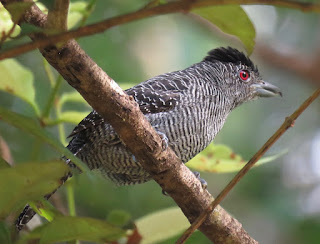





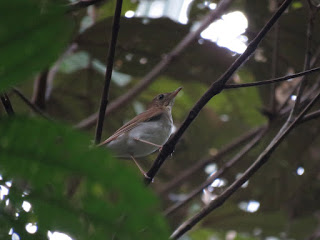















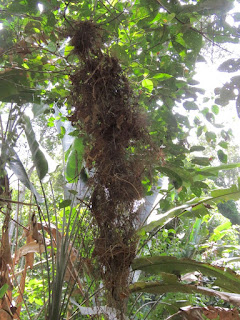

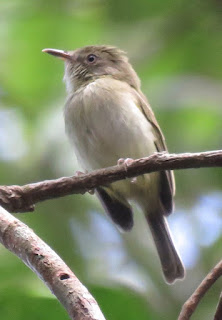



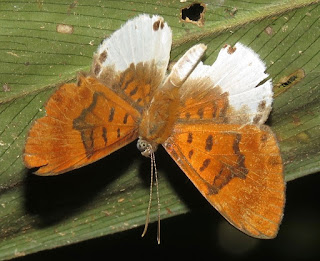





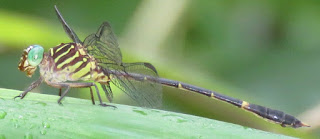

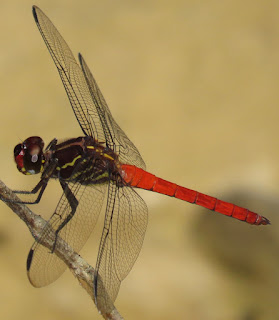























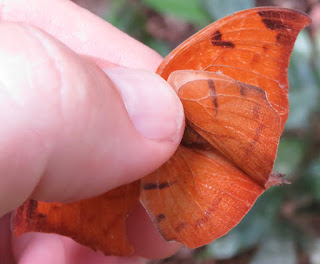






No comments:
Post a Comment